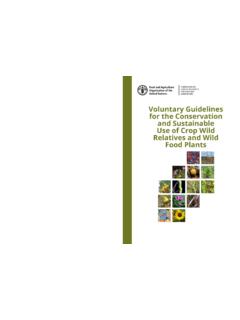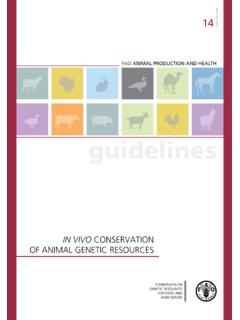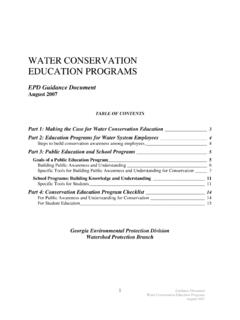Transcription of Don River Watershed Plan Surface Water Hydrology ...
1 Don River Watershed plan Surface Water Hydrology /Hydraulics and stormwater management Report on Current Conditions 2009 Prepared by: Toronto and Region conservation Don River Watershed plan : Surface Water Hydrology /Hydraulics and stormwater management Report on Current Conditions Toronto Region conservation CFN: 37590 2 2009 Table of Contents Table of 2 List of Tables .. 3 List of 3 Introduction .. 4 Surface Water in the Rural and Urban Landscape .. 4 Valley and Stream Corridor management Program .. 5 Data Sources and 6 Flow Gauging in the Don Watershed .. 6 Real Time Gauging Network .. 7 Surface Water Modeling .. 9 Don Hydrology Model Update .. 9 Existing Conditions in the Don River Watershed .
2 9 Stream Flow .. 10 stormwater management .. 18 Existing stormwater 19 stormwater management Criteria .. 19 Flooding and Hydraulics .. 25 Flood Vulnerable Areas .. 27 Flood Protection in the Lower 27 Ratings for the Stream Flow, Flooding and stormwater management Indicators 28 Stream 29 Flooding .. 30 stormwater management .. 32 Improving stormwater 32 stormwater management Retrofit Opportunities .. 33 Wet Weather Flow management Master plan for the City of Toronto .. 38 The Preferred Strategy and Implementation 39 management Issues and Considerations .. 41 References ..43 Appendix A: Known Flood Prone Locations in the Don River Watershed .. 46 Don River Watershed plan : Surface Water Hydrology /Hydraulics and stormwater management Report on Current Conditions Toronto Region conservation CFN: 37590 3 2009 List of Tables Table 1: Real time gauging locations in the Don River 7 Table 2: Modeled design storm peak flows (cms) for the previous hydrologic model update (1992) and current conditions (2004).
3 15 Table 3: Environmental design criteria for a Water balance approach to stormwater management .. 22 Table 4: Retrofit opportunities based on stormwater retrofit studies by 905 area 35 Table 5: New potential pond locations based on stormwater retrofit studies by 905 area municipalities.. 35 Table 6: Completed and in-progress stormwater pond retrofits.. 36 Table 7: Implementation of the City of Toronto's Wet Weather Flow management Master 41 List of Figures Figure 1: Hydrological monitoring stations in the Don River 8 Figure 2: Comparison of mean annual and modeled peak flows for the Don River at Todmorden.. 10 Figure 3: Average annual flow trend for the Don River (Period of Record).. 11 Figure 4: Comparison of mean daily flows for the Don River and the Little Rouge 12 Figure 5: Flood damage to Don River due to August 19th 2005 rain event (Edwards Gardens).
4 13 Figure 6: Map of Hydrology model flow node locations (2004) in the Don River Watershed .. 14 Figure 7: Existing and proposed stormwater controls in the Don River Watershed (2006).. 20 Figure 8: stormwater management controlled areas.. 21 Figure 9: Flood vulnerable locations within the Don River Watershed (2008).. 26 Figure 10: Mean annual flows in the Don River Watershed (1997 to present).. 31 Figure 11: stormwater retrofit opportunities in the 905 region of the Don River Watershed .. 34 Figure 12: Earl Bales Park Retrofit (Example, Option 4).. 36 Figure 13: Pamona Mills existing fish barrier .. 37 Figure 14: Pamona Mills existing erosion scar.. 37 Figure 15: Wet Weather Flow management Master plan study areas in the Don River 40 Don River Watershed plan : Surface Water Hydrology /Hydraulics and stormwater management Report on Current Conditions Toronto Region conservation CFN: 37590 4 2009 Introduction The Toronto and Region conservation Authority (TRCA), in consultation with the multi-stakeholder Don Watershed Regeneration Council and Watershed municipalities, is developing a Watershed plan for the Don River .
5 This Watershed planning process has been initiated in response to a number of recent policy and planning developments, including the need to fulfill York Region s Watershed planning requirements under the Oak Ridges Moraine conservation plan (ORMCP, Ontario Regulation 140/02) and to update the original management strategy outlined in Forty Steps to a New Don (Metropolitan Toronto and Region conservation Authority [MTRCA], 1994). The goal of the Watershed planning study is to recommend updated management strategies that will guide land and Water use decisions, such that the overall ecological health of the Don River Watershed is protected and improved. The aim is to build on the Forty Steps principles to protect what is healthy, regenerate what is degraded, and take responsibility for the Don.
6 Recognizing the significant Watershed planning work that has already been completed, and given that there are limited undeveloped lands remaining on the ORM within the Watershed boundary, the Watershed plan will focus mainly on filling information gaps, guiding land use planning and approval decisions, and providing direction to advance implementation of regeneration priorities. This report has been prepared as part of the scoping and characterization phase of the Watershed planning process, in which current Watershed conditions are presented in the form of technical reports covering a range of subject areas, including groundwater quality and quantity, Surface Water quantity, low flows and Water use, Surface Water quality, fluvial geomorphology, aquatic systems, terrestrial systems, nature-based experiences, cultural heritage, land and resource use, and air quality.
7 This report lays out the current conditions relating to flooding and stormwater management in the Don River Watershed . Also included in the report are the findings from the most up-to-date modeling of the Don River Hydrology and peak flow rates. Section 2 provides an introduction to Surface Water flows in rural and urban landscapes. Section 3 outlines data sources and methods. Section 4 presents current Watershed conditions relating to stream flow, stormwater management , and flooding and hydraulics, and outlines management objectives, indicators, targets and ratings. Sections 5 and 6 address opportunities for improving stormwater controls and management considerations for the Don River Watershed plan . Surface Water in the Rural and Urban Landscape Extreme variations in Surface Water flow in undeveloped watersheds occur less frequently and are less severe than those in settled landscapes.
8 Similar to the historical settlement patterns of southern Ontario, land use changes were initially made in the Don to allow for agricultural activities in the late 18th Century. Flow stabilizing features, such as forested lands, were cleared, wetlands were drained and small streams were channelized with their riparian zones removed or altered. These activities altered the hydrologic cycle by reducing interception, evapotranspiration and infiltration, which in turn generated increased Surface runoff and higher, more frequent flows in rivers and streams. Don River Watershed plan : Surface Water Hydrology /Hydraulics and stormwater management Report on Current Conditions Toronto Region conservation CFN: 37590 5 2009 Urban land form changes have imposed the most significant stress on the hydrologic system.
9 Urbanization typically creates an increased area of impervious surfaces, such as paved roads, driveways and roof tops that reduce infiltration and generate greater runoff. Past engineering practices prior to the early 1980s focused on conveying the increased volumes of Surface runoff as quickly as possible off the land through storm sewers and often channelized watercourses. The removal of wetlands and small Surface drainage systems and encroachment upon floodplains tend to reduce or eliminate the natural flood storage capacity. As a result of these urban impacts, seasonal variations in stream flow are less defined. Runoff response from a rainfall or snow melt event, regardless of the season, is more rapid compared to rural watercourses.
10 The urban watercourse generally receives a greater total volume of flow in a shorter time frame, thereby resulting in much higher flood flows. The more rapid hydrologic response rate and higher peak flows, combined with historical encroachment on the floodplain, result in a greater hazard from flooding in urban areas. Reduced infiltration can lower local groundwater levels, which can in turn reduce groundwater discharges to baseflow. This impact is of most concern in headwater streams, where streams can be seasonally dry. Aquatic species dependent on natural patterns of flow are impacted by the increased amounts and frequency of runoff events as well as decreased baseflows. Alterations in stream flow can also aggravate natural rates of erosion, degrading stream Water quality and aquatic habitat.






